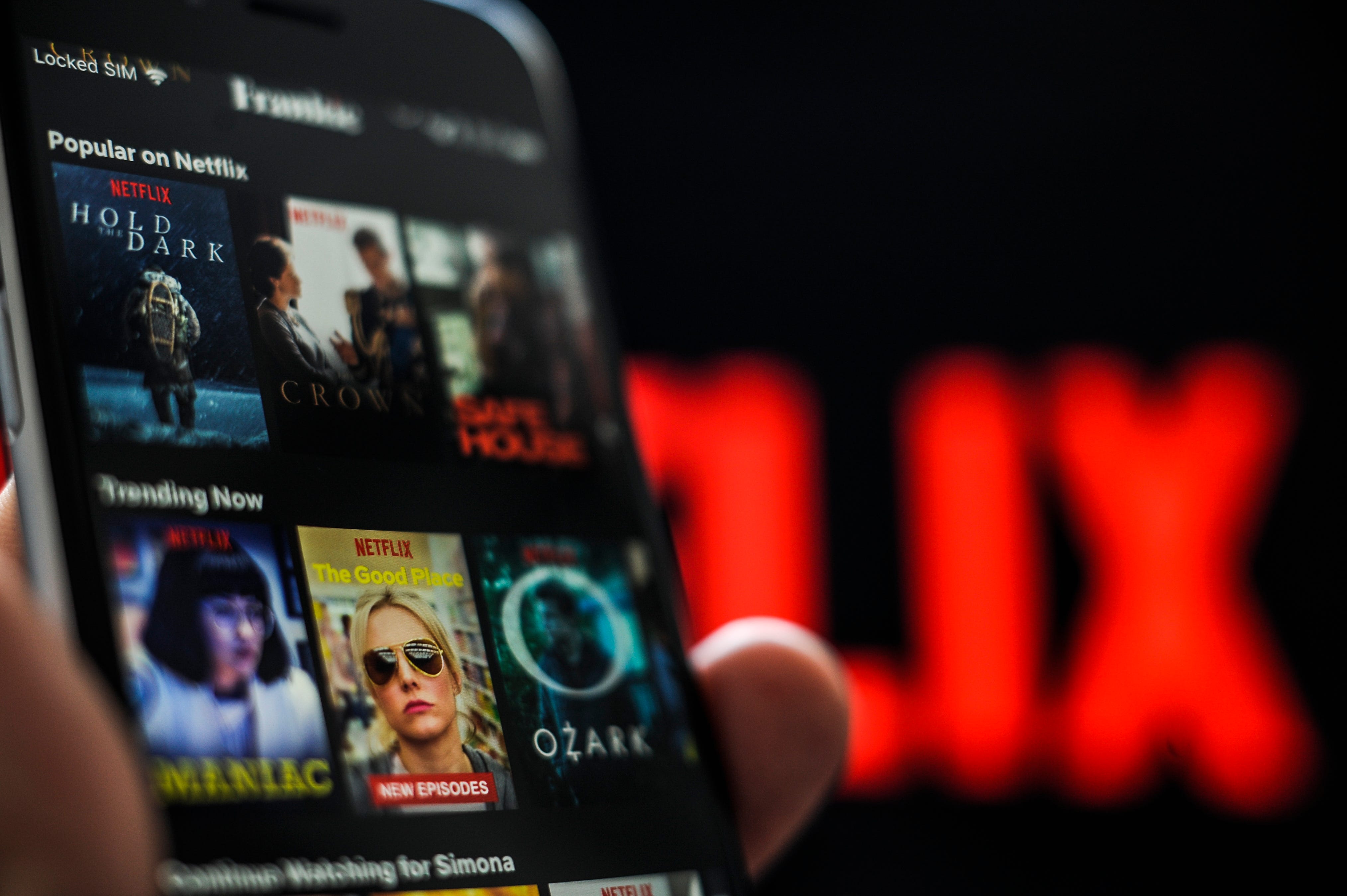Film companies are following Netflix by using big data to make big decisions — yet it could cut down on the risk-taking that makes classics

 “Nobody knows anything,” wrote legendary Hollywood screenwriter William Goldman in 1983. “Not one person in the entire motion picture field knows for a certainty what’s going to work. Every time out it’s a guess and, if you’re lucky, an educated one.”
“Nobody knows anything,” wrote legendary Hollywood screenwriter William Goldman in 1983. “Not one person in the entire motion picture field knows for a certainty what’s going to work. Every time out it’s a guess and, if you’re lucky, an educated one.”
Nearly 40 years later, Hollywood studios are still making wild guesses about which movies might break even or make a profit. Films are what economists refer to as experience goods, so viewers don’t know whether they’ve made a good decision until they’ve watched the film. Movie marketing, too, is still costly and inaccurate, averaging $30 million per film but rising to as much as $200 million for major blockbusters. For Hollywood, this informational asymmetry has always been a problem, and in an industry in which every product represents an extremely costly investment, nothing is worse than unpredictability.
The internet, however, is a rich resource of behavioral consumer data that holds many of the answers Hollywood needs — provided it will look for them. Even as Silicon Valley built multibillion-dollar empires off the back of consumer data, the movie industry remained cautious and conservative, continuing to rely on a combination of traditional market research, experience, and gut feeling. Yet Hollywood is finally recognizing that data analysis can help it make more informed decisions about projects, and the industry is developing internal data analysis teams and working with external specialists.
Both audience research and test screenings are imprecise and time-consuming.
In the past, Hollywood relied on surveys and test screenings to assess which viewers were interested in what. Both have a long history in the film industry, as Vinzenz Hediger, professor of cinema studies at Goethe University in Frankfurt explains:
Testing movies was, like a lot of things, probably an idea of the director D.W. Griffith. Audience research, on the other hand, began in the 1930s in reaction to two things: the audience shrinkage after 1933, which began after the boom in talkies ended that had protected Hollywood from the consequences of the Great Depression for five years, and the emergence of opinion research by institutes like Gallup.
Both audience research and test screenings are imprecise and time-consuming. Large-scale analysis of user data, however, can be combined with information sources such as credit cards to build a detailed and highly accurate picture of public behavior and reaction. Marketing budgets can be far more efficiently targeted to reach the people most likely to be interested. Evaluating public reaction in real time means that campaigns can be tweaked even after the film has premiered; the first few weeks after release are critically important for determining the long-term success of a film.
In 2015, Legendary Entertainment, the production company behind Interstellar and The Hangover, realized that analysis of social media was predicting its hacker drama Black Hat would flop, and so it decided to pull back on marketing spend. The company now uses audience analytics to test the efficacy of individual trailers and advertising messages, adapting them accordingly throughout the marketing campaign.
Data can be gathered from multiple sources to use in this way, including historic and real-time social media, Wikipedia, box office sales, ratings from film review websites like Rotten Tomatoes, or data from internet-based virtual stock markets such as the virtual Hollywood Stock Exchange (HSX). Even data about online piracy can potentially be useful. More sophisticated analysis can predict performance weeks before release. While most scientific studies currently set the upper limit around a month ahead, IBM’s advanced analytics team — a leading service provider for the film industry — is purportedly able to make reliable predictions three months ahead of a release.
Companies including Rentrak, Teradata, and Convosphere offer similar services to a range of Hollywood studios. “Movie studios are increasingly using the audience insights gathered from social data to improve marketing content,” says Jackie Cuyvers, CEO of Convosphere. “This insights-driven content and creative is able to focus on specific audience segments across online channels. The volume of data available and the speed of analysis to insight is helping this happen faster than ever before.”
It’s far from perfect. Insufficient or poor-quality data can pose a big problem for analysts. Users of platforms like Twitter, for example, are by no means representative of the entire moviegoing population, and the algorithms and rules of these kinds of platforms can also distort the meaningfulness of the results. Big data approaches can also fall prey to the assumption that the collected data is an objective rendering of reality — a fatal error that fails to acknowledge the implicit biases of data sets, such as an overrepresentation of obnoxious voices. There is, for example, evidence that the online fan backlash against the 2017 Star Wars film The Last Jedi was overstated and largely driven by trolls and bots.
Despite these problems, Ralph Schroeder, a professor of social science of the internet at the Oxford Internet Institute, sees Hollywood’s integration of data analysis as inevitable. “In other industries, too, big data is no longer seen as a game-changing savior but more as an efficiency-increasing tool in the race to gain market advantages,” he says. “Instead of a big data revolution, we are much more likely to witness a gradual integration of these new methods into the production and marketing of films. In any such process, there will be winners and losers, with those who have access to and control the data among the winners, while ‘data poor’ organizations will be less well served.”
Some studios have already embraced consumer data not just for marketing but for commissioning itself. Streaming services have a huge advantage in this area, monitoring not only what each subscriber watches but when they pause the movie, whether they give up on a series or what they add to their wish list. Netflix commissioned House of Cards for the U.S. after it noticed the British original was very well received by certain viewers, but the company has also pioneered complex granular analytics, carving up content into 70,000 characteristics that can be monitored and tailored to a viewer’s behavior.
Is there some danger to tying commissioning too closely to public sentiment? Test audiences’ preference for the most predictable, feel-good endings could have deprived us of some of cinema’s most poignant moments. Writing about Michael Curtiz’s wartime classic Casablanca, film critic Mark Kermode is convinced that a test audience would have preferred Rick and Elsa never to leave each other, embracing in some Moroccan bar rather than parting tragically. Its ending was, of course, part of its brilliance, and the film became a classic.
Perhaps we should regard this as a cautionary tale. Big data is a powerful tool for Hollywood, but it shouldn’t be seen as the be-all and end-all for the future of the movie industry. Since the early days of cinema, technological innovations have helped to enhance films and their modes of production and distribution. In the end, however, it has been the creative spirit of the people working “in the movies” that has propelled Hollywood forward.
"computer" - Google News
January 13, 2020 at 01:34PM
https://ift.tt/2Njpmbu
Hollywood’s Next Great Studio Head Will Be a Computer - OneZero
"computer" - Google News
https://ift.tt/2PlK2zT
Shoes Man Tutorial
Pos News Update
Meme Update
Korean Entertainment News
Japan News Update
No comments:
Post a Comment